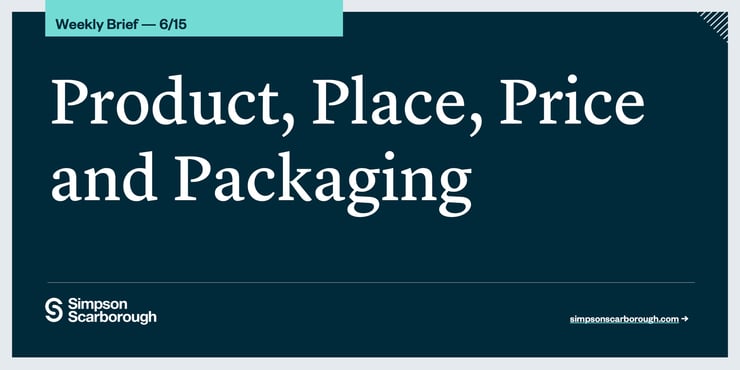While it remains a harrowing time in the world of higher education and beyond, SimpsonScarborough is thrilled to have Sara Wallace join our ranks as Director, Marketing & Media Strategy. Sara's twelve years of agency and higher ed experience will help us deepen our expertise and client services in marketing and media planning. Since joining us just last month, she's already been hard at work delivering data and strategic thought leadership around the evolving media and advertising landscapes during this unprecedented time. Sara earned her Bachelor's in Political Science from Hobart and William Smith Colleges, and a Master's in History and Communications from the State University of New York College at Oswego.
1. Protect Your Brand
2020 has two major developments that will disrupt the digital space: COVID-19 is resulting in significant amounts of misinformation being posted online; and the coming Presidential election will be sure to ignite many different conversations online, on TV, and radio. Take care to review all of the platforms you want to run on and ensure you’re blacklisting specific sites and content types that you do not want your brand to be associated with.
64% of people in a recent GroupM study reported that they would develop a negative view of a brand if it’s located near inappropriate content. As digital platforms continue to evolve and expand their networks, institutions and their partners will need to have heightened awareness of the presence of misinformation and volatile content that is a poor representation of your brand pillars.
-
How to Approach:
Ask your agency partner or digital media lead to pull a list of sites where your media is appearing, as well as the blacklist. Regular audits (every 4-6 weeks) will aid in ensuring your catching any changes in recent past that you can mitigate if needed. Be sure to ask about on-air shows on radio or TV as well that may be running controversial content and request that vendors not run your spots during those time periods.
2. Remain Agile & Minimize Variation
If you’re working with limited resources, like most of us, it can be a challenge when you run multiple sizes and multiple creative versions at one time. Personalization is a blessing or a curse, depending on how you approach your strategy. While pivoting your existing digital placements to account for the evolving landscape, reduce the number of creative messages and push out only mission critical messaging. Consumers are demanding more community, safety and guidance messaging during the Pandemic so focus on what matters most to them.
-
How to Approach:
Your audiences will let you know what they want to hear from you. Consolidate to one message and include it on all of your materials for consistency and to maximize impact.
3. Listen for Evolving Regulations
Lean on your agency partners and/or immediate teams to stay up to speed on changing rules and regulations. COVID-19 has led Google to re-evaluate their regulations around medical terminology to try and work with non-medical brands that are trying to reach their audiences with information. Make sure you understand these potential limitations or barriers before creating content and trying to execute on a plan.
-
How to Approach:
Check in with vendor partners regularly to ask them what they are hearing or what has changed. Then, determine based on the potential barriers if it’s worth your team’s time to launch a detailed strategy or if you should pivot and get creative to work within the boundaries set for media.
4. Be Authentic
During difficult, confusing times the opportunity arises for Brands to externalize their culture and values and bring others into that community. In fact, recent Edelman research notes that 62% of consumers believe that the world will not make it through crisis without brands playing a critical role. This is a make or break moment for brands to show up for consumers and explain how their organizations are contributing to the greater good.
-
How to Approach:
Share your cultural values online and engage in conversation with consumers through paid and owned placements. Storytelling through video also helps people connect to your brand and feel good.
5. Honor Privacy
Digital advertising is a double-edged sword. Consumers want a level of personalization so relevant messages are served to them; however, they are increasingly scrutinizing how their data is being used or shared. Prior to the outbreak of COVID-19, 37% of consumers felt that digital ads are too intrusive and 3 in 5 are less likely to purchase or use a product if they know that their information is being used for any purpose.
-
How to Approach:
Ungate existing content for the short or long term and help educate and engage people. Building trust and providing transparency is a critical first step to fostering brand advocacy.


.jpeg)








